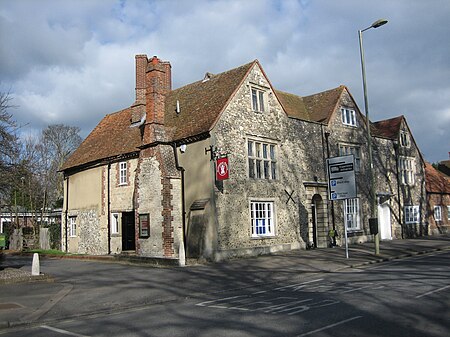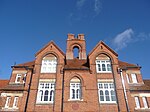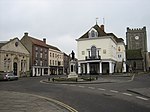Wallingford Museum

Wallingford Museum is a museum with collections of local interest, housed in a Tudor house in High Street, Wallingford, Oxfordshire (formerly Berkshire). The museum has an extensive collection relating to the town's history. Displays include archaeology, Wallingford Castle, and the town in medieval and Victorian times. A free audio tour is available. The museum is in a mid-16th-century timber-framed house with a 17th-century flint façade. It faces the Kinecroft, an open space in Wallingford which is bordered on two sides by Anglo-Saxon burh defences built in the 9th century. The Museum, which is fully accredited, is run entirely by volunteers. Wallingford Museum is an independent charitable company registered in England & Wales.
Excerpt from the Wikipedia article Wallingford Museum (License: CC BY-SA 3.0, Authors, Images).Wallingford Museum
High Street, South Oxfordshire Winterbrook
Geographical coordinates (GPS) Address Nearby Places Show on map
Geographical coordinates (GPS)
| Latitude | Longitude |
|---|---|
| N 51.60111 ° | E -1.12756 ° |
Address
Walliingford Museum
High Street
OX10 0DB South Oxfordshire, Winterbrook
England, United Kingdom
Open on Google Maps








